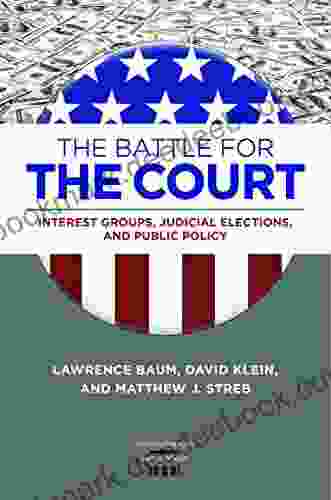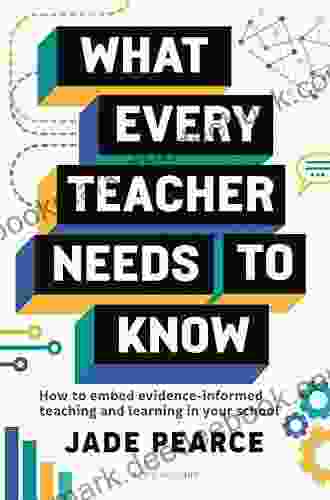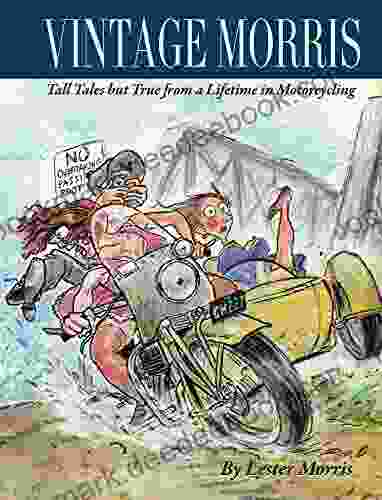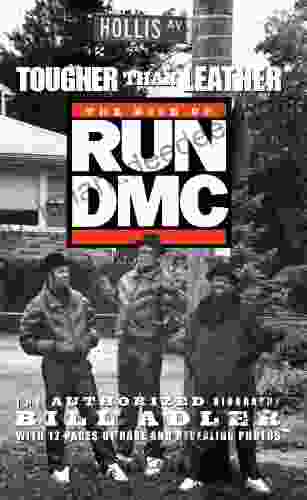Statistics for Criminology and Criminal Justice: A Comprehensive Guide

Statistics are an indispensable tool in the field of criminology and criminal justice. They provide a systematic and objective approach to understanding crime patterns, criminal behavior, and the effectiveness of crime reduction interventions. This comprehensive guide explores the various statistical methods, research designs, and applications used in criminology and criminal justice, empowering readers with a deep understanding of how data analysis can inform decision-making and policy development.
4.7 out of 5
| Language | : | English |
| File size | : | 48296 KB |
| Text-to-Speech | : | Enabled |
| Screen Reader | : | Supported |
| Enhanced typesetting | : | Enabled |
| Word Wise | : | Enabled |
| Print length | : | 454 pages |
Statistical Methods in Criminology
Criminologists employ a wide range of statistical methods to analyze crime data. These methods include:
- Descriptive statistics: Summarize data using measures such as mean, median, mode, range, and standard deviation.
- Inferential statistics: Allow researchers to make inferences about a larger population based on a sample.
- Regression analysis: Examines the relationship between an independent variable (e.g., poverty level) and a dependent variable (e.g., crime rate).
- Multivariate analysis: Analyzes the relationship between multiple independent variables and a dependent variable, controlling for confounding factors.
- Time series analysis: Examines patterns over time, such as seasonal or yearly variations in crime rates.
Research Designs in Criminal Justice
Researchers in criminal justice use various research designs to collect and analyze data. These designs include:
- Experimental designs: Randomly assign participants to different groups to test the effectiveness of an intervention.
- Quasi-experimental designs: Compare groups that are not randomly assigned but have some similarities.
- Observational designs: Collect data on naturally occurring groups without manipulating variables.
- Longitudinal designs: Collect data from the same participants over time to examine changes over time.
- Cross-sectional designs: Collect data from different groups at a single point in time.
Applications of Statistics in Criminology and Criminal Justice
Statistics have numerous applications in criminology and criminal justice, including:
- Crime analysis: Identify crime patterns, trends, and hot spots to inform crime prevention strategies.
- Criminal profiling: Analyze crime scene evidence to develop a profile of potential suspects.
- Criminal justice policy: Evaluate the effectiveness of criminal justice interventions, such as sentencing guidelines and rehabilitation programs.
- Risk assessment: Predict the likelihood of reoffending among criminal offenders to inform parole decisions.
- Resource allocation: Determine the most efficient allocation of resources for crime prevention and control efforts.
Challenges in Statistics for Criminology and Criminal Justice
Despite the value of statistics in criminology and criminal justice, there are challenges associated with their application, including:
- Data limitations: Access to high-quality crime data can be limited due to privacy concerns or underreporting.
- Model selection: Choosing the most appropriate statistical model for a given data set can be challenging.
- Interpretation: Interpreting statistical findings requires careful consideration of the context and limitations of the study.
- Bias: Statistical methods can be susceptible to bias if not applied properly.
- Ethical considerations: The use of statistics in criminal justice raises ethical concerns related to confidentiality, privacy, and potential bias against certain populations.
Statistics play a vital role in criminology and criminal justice, providing a foundation for understanding crime patterns, evaluating criminal justice policies, and informing decision-making. By mastering statistical methods and research designs, practitioners can make informed decisions based on evidence and data analysis. While challenges exist, continued research and methodological advancements will enhance the use of statistics to address complex crime-related issues and promote a fairer and more effective criminal justice system.
4.7 out of 5
| Language | : | English |
| File size | : | 48296 KB |
| Text-to-Speech | : | Enabled |
| Screen Reader | : | Supported |
| Enhanced typesetting | : | Enabled |
| Word Wise | : | Enabled |
| Print length | : | 454 pages |
Do you want to contribute by writing guest posts on this blog?
Please contact us and send us a resume of previous articles that you have written.
 Chapter
Chapter Text
Text Story
Story Genre
Genre Reader
Reader Newspaper
Newspaper Sentence
Sentence Bookmark
Bookmark Shelf
Shelf Glossary
Glossary Foreword
Foreword Synopsis
Synopsis Annotation
Annotation Footnote
Footnote Manuscript
Manuscript Scroll
Scroll Bestseller
Bestseller Classics
Classics Library card
Library card Biography
Biography Memoir
Memoir Encyclopedia
Encyclopedia Dictionary
Dictionary Narrator
Narrator Character
Character Librarian
Librarian Borrowing
Borrowing Stacks
Stacks Archives
Archives Periodicals
Periodicals Study
Study Reserve
Reserve Reading Room
Reading Room Interlibrary
Interlibrary Study Group
Study Group Awards
Awards Reading List
Reading List Book Club
Book Club Theory
Theory Textbooks
Textbooks Herbie Hancock
Herbie Hancock Hv Nema
Hv Nema Heather Havrilesky
Heather Havrilesky Lawrence Mcfadden
Lawrence Mcfadden James M Doran
James M Doran Jeremy Fisher
Jeremy Fisher Colin Receveur
Colin Receveur Paul Hegstrom
Paul Hegstrom Joan Singleton
Joan Singleton Sara Mclaughlin Mitchell
Sara Mclaughlin Mitchell Reynold Jay
Reynold Jay James O Heare
James O Heare Simon Bradley
Simon Bradley Stan Huskey
Stan Huskey Karen Solomon
Karen Solomon Ricki Stefanie Tannen
Ricki Stefanie Tannen Maggie Righetti
Maggie Righetti Ben Clanton
Ben Clanton Verna Dreisbach
Verna Dreisbach Sian Keegan
Sian Keegan
Light bulbAdvertise smarter! Our strategic ad space ensures maximum exposure. Reserve your spot today!

 Gavin MitchellInterest Groups, Judicial Elections, and Public Policy: A Constitutionalist...
Gavin MitchellInterest Groups, Judicial Elections, and Public Policy: A Constitutionalist...
 Christopher WoodsThe Communist Manifesto Illustrated: A Visual Guide to Karl Marx's Essential...
Christopher WoodsThe Communist Manifesto Illustrated: A Visual Guide to Karl Marx's Essential...
 Giovanni MitchellPaddington Abroad: Michael Bond's Enduring Classic about a Peruvian Bear in...
Giovanni MitchellPaddington Abroad: Michael Bond's Enduring Classic about a Peruvian Bear in... Vic ParkerFollow ·7.5k
Vic ParkerFollow ·7.5k Isaac BellFollow ·4.7k
Isaac BellFollow ·4.7k Raymond ParkerFollow ·17.8k
Raymond ParkerFollow ·17.8k Louis HayesFollow ·19.5k
Louis HayesFollow ·19.5k Javier BellFollow ·5.2k
Javier BellFollow ·5.2k Lawrence BellFollow ·3.2k
Lawrence BellFollow ·3.2k Jayden CoxFollow ·15.9k
Jayden CoxFollow ·15.9k Carl WalkerFollow ·14.3k
Carl WalkerFollow ·14.3k

 Oscar Wilde
Oscar WildeDon't Stop Thinking About the Music: Exploring the Power...
Music is an...

 Floyd Richardson
Floyd RichardsonSnowman Story Problems Math With Santa And Friends
It's a cold winter day, and...

 W. Somerset Maugham
W. Somerset MaughamWhat Every Classroom Teacher Needs To Know: A...
Teaching is a challenging...

 Edgar Cox
Edgar CoxTall Tales But True: A Lifetime of Motorcycling...
I've been riding motorcycles for over 50...

 Chinua Achebe
Chinua AchebeBuni: Happiness Is a State of Mind
Buni is a beautiful...

 Herman Melville
Herman MelvilleThe Arts and Crafts of Older Spain: Embodying the Essence...
In the heart of the Iberian...
4.7 out of 5
| Language | : | English |
| File size | : | 48296 KB |
| Text-to-Speech | : | Enabled |
| Screen Reader | : | Supported |
| Enhanced typesetting | : | Enabled |
| Word Wise | : | Enabled |
| Print length | : | 454 pages |






